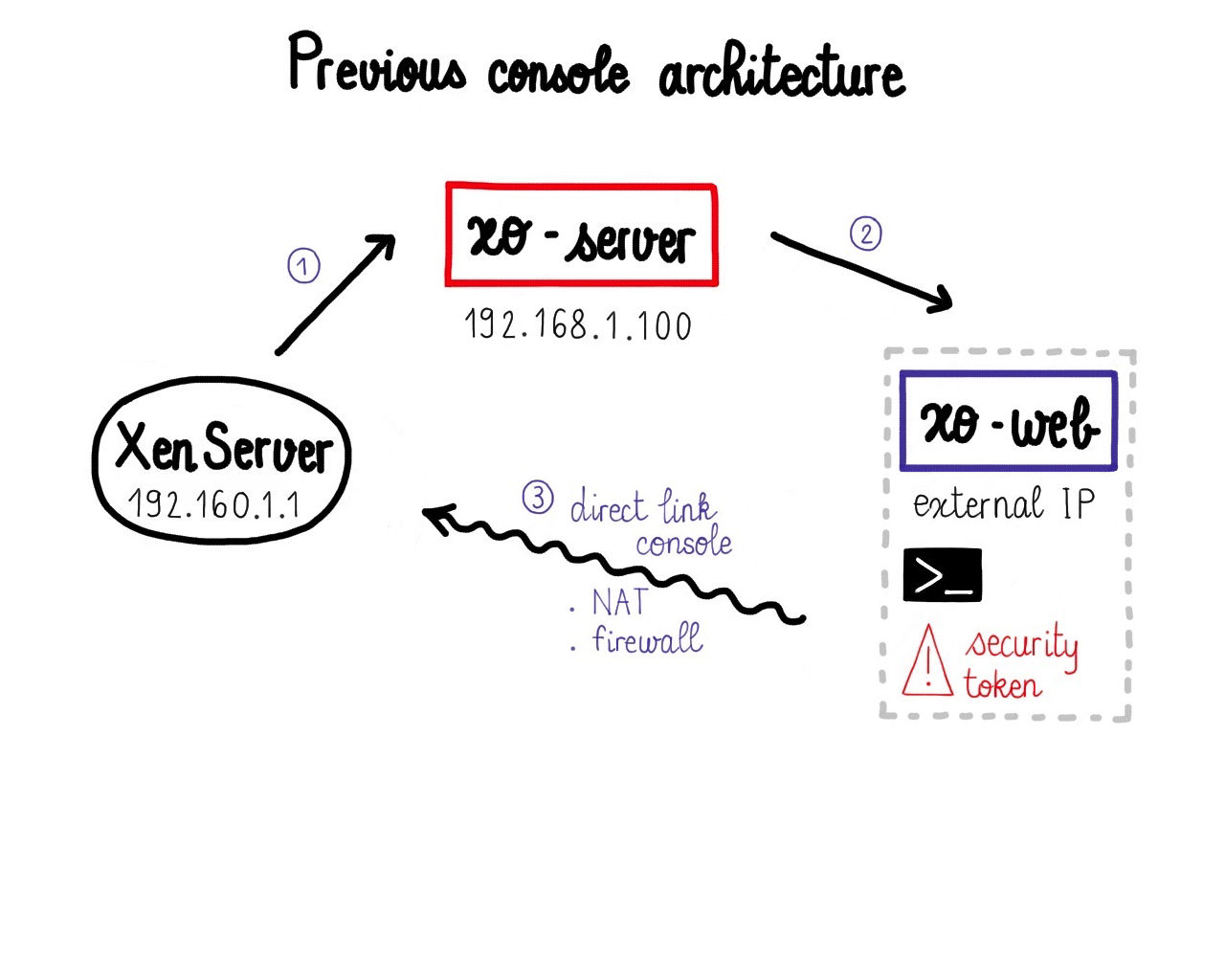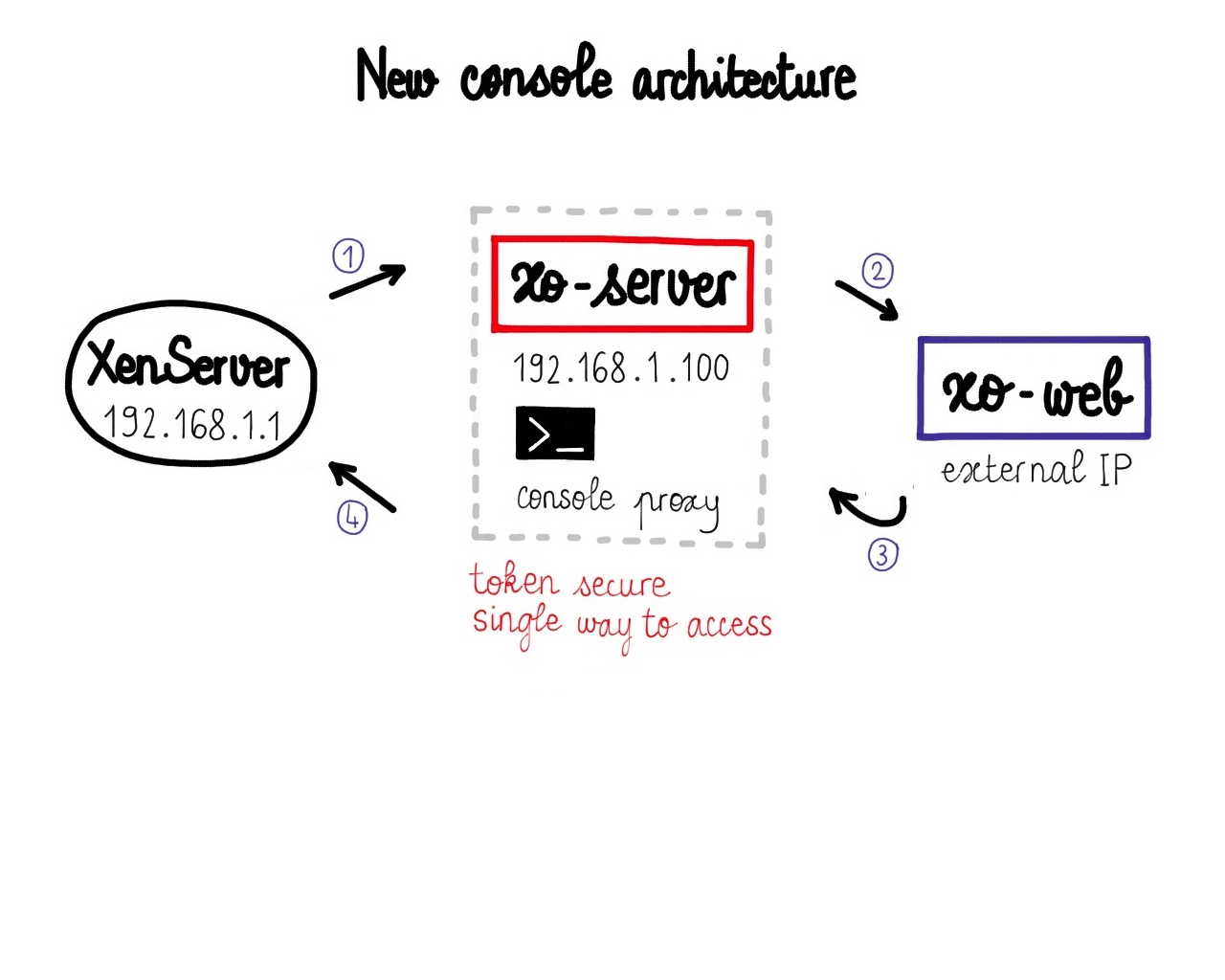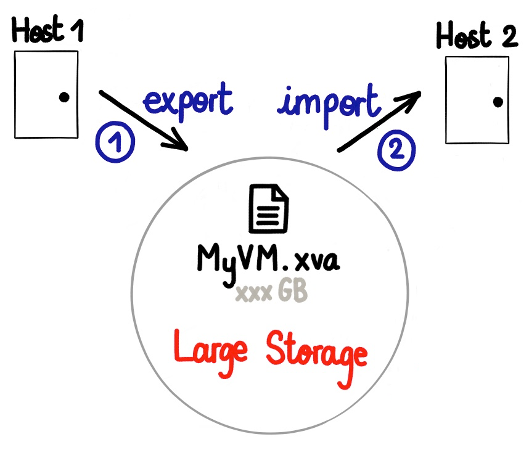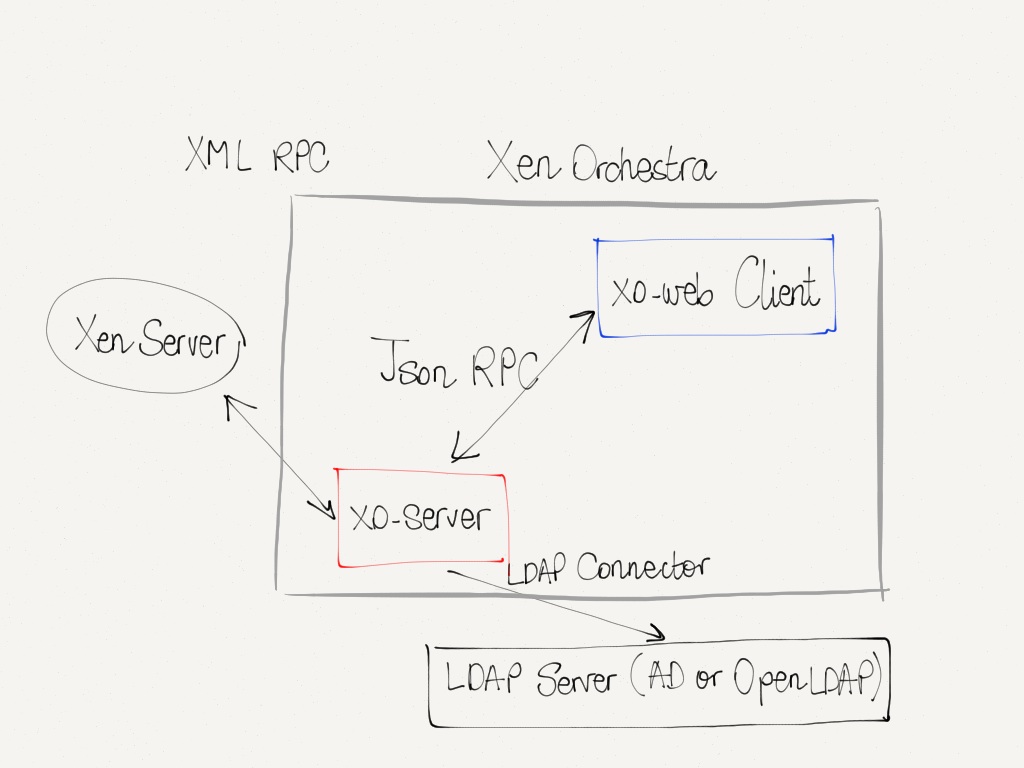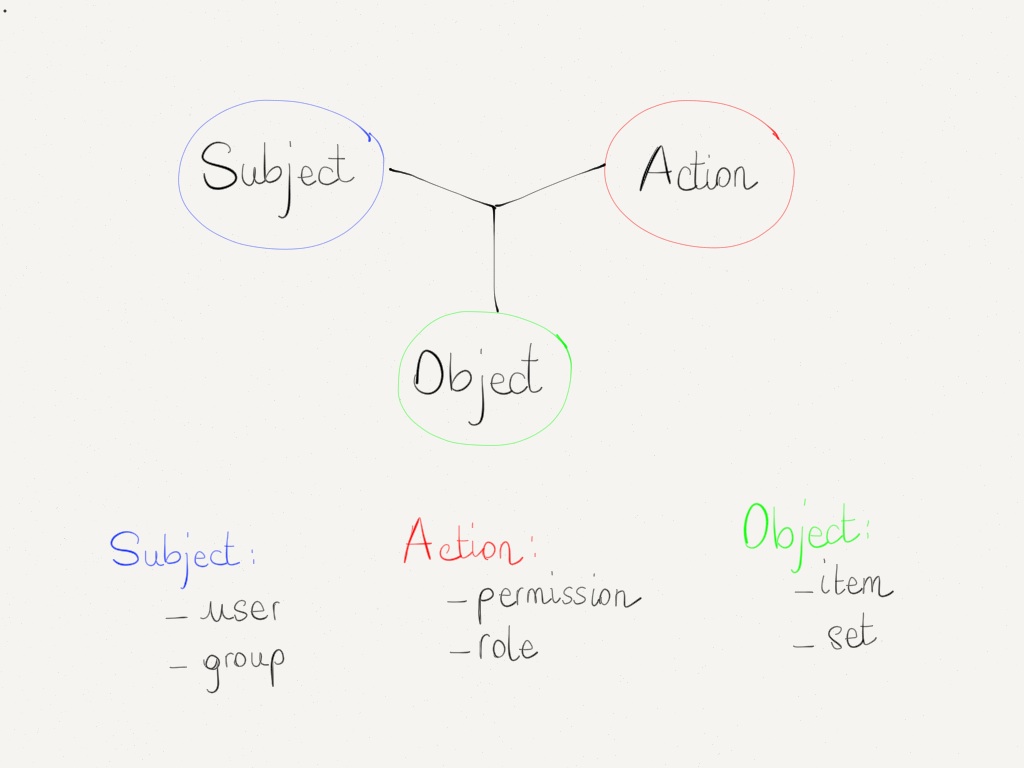I would like to replace every "XenServer" I find in the doc by "XCP-ng/XenServer". This follows an internal conversation we had with Olivier and Yann.
9.0 KiB
Architecture
Xen Orchestra (XO) is software built with a server and clients, such as the web client xo-web, but also a CLI capable client, called xo-cli.
:::tip XO is totally agent-less: you don't have to install any program on your hosts to get it working! :::
XOA
Xen Orchestra Virtual Appliance (XOA) is a virtual machine with Xen Orchestra already installed, thus working out-of-the-box.
This is the easiest way to try Xen Orchestra quickly.
Your XOA is connected to all your hosts, or the pool master only if you are using Pools in XCP-ng/Citrix Hypervisor:
Xen Orchestra (XO)
Xen Orchestra itself is built as a modular solution. Each part has its role.
xo-server (server)
The core is "xo-server" - a daemon dealing directly with XCP-ng/XenServer or XAPI capable hosts. This is where users are stored, and it's the center point for talking to your whole Xen infrastructure.
XO-Server is the core of Xen Orchestra. Its central role opens a lot of possibilities versus other solutions - let's see why.
Daemon mode
As a daemon, XO-Server is always up. Because of this, it can listen and record every event occurring on your entire Xen infrastructure. Connections are always open and it can cache information before serving it to another client (CLI, Web or anything else).
Central point
Contrary to XenCenter, each Xen Orchestra's client is connected to one XO-Server, and not all the Xen servers. With a traditional architecture:
You can see how we avoid a lot of resource and bandwidth waste with a central point:
Events
Legacy interfaces use the "pull" model, requesting data every "x" seconds:
It's not scalable and slow.
Previously with XO < 3.4, we used events in the following way:
But the interface was still lagging behind the server. With XO 3.4 and beyond, we now have a full event system, allowing instant display of what's happening on your infrastructure:
A proxy for your hosts
XO-Server will act as a proxy for all your clients. This opens a lot of possibilities!
Console proxy
A good example is the console: you can now expose your consoles even if your clients are outside the network!
VM streaming
Another possibility is to stream a VM from one host to another.
To do that previously, you needed to export your VM somewhere, then re-import it:
Thanks to our architecture, it's now far easier:
Patching on the fly
To install a patch manually, it requires a lot of steps: find, download, extract and apply the patch, sequentially.
"xo-server" can do all these steps at once:
- automatically download the patch from Citrix servers
- unzip it and upload it on the fly to your host
- apply it as soon it's done
Pluggable
It's really easy to connect other modules to XO-server, and extend or adapt the solution to your needs (see XO-web and XO-cli for real examples).
ACLs
NodeJS under the hood
NodeJS is a software platform for scalable server-side and networking applications. It's famous for its efficiency, scalability and its asynchronous capabilities. Exactly what we need! Thus, XO-server is written in JavaScript.
xo-web (web UI)
The web interface is "xo-web" - it runs directly from your browser. The connection with xo-server is done via WebSockets.
This is probably the first part of Xen Orchestra you'll see. The Web interface allows you to interact with your virtual infrastructure. As a module of XO-Web it facilitates everyday Xen administrator work, but also provides a solution to delegate parts of your infrastructure to other people.
Read the manage section to discover what you can do in XO-web.
ReactJS
We stay consistent from the back-end to the front-end with one main language: ReactJS
xo-cli (CLI)
"xo-cli" is a module allowing you to send commands directly from the command line.
Thanks to introspection, xo-cli will detect all the available features exposed in the xo-server API.
:::warning This CLI is mainly used as a debug tool, there's no 100% guarantee on its stability. Use it only if you really know what you do. :::
Usage
$ xo-cli --help
Usage:
xo-cli --register [--allowUnauthorized] [--expiresIn duration] <XO-Server URL> <username> [<password>]
Registers the XO instance to use.
--allowUnauthorized, --au
Accept invalid certificate (e.g. self-signed).
--expiresIn duration
Can be used to change the validity duration of the
authorization token (default: one month).
xo-cli --createToken <params>…
Create an authentication token for XO API.
<params>…
Accept the same parameters as --register, see its usage.
xo-cli --unregister
Remove stored credentials.
xo-cli --list-commands [--json] [<pattern>]...
Returns the list of available commands on the current XO instance.
The patterns can be used to filter on command names.
xo-cli --list-objects [--<property>]… [<property>=<value>]...
Returns a list of XO objects.
--<property>
Restricts displayed properties to those listed.
<property>=<value>
Restricted displayed objects to those matching the patterns.
xo-cli <command> [<name>=<value>]...
Executes a command on the current XO instance.
Register your XO instance
$ xo-cli --register http://xo.my-company.net admin@admin.net admin
Successfully logged with admin@admin.net
Note: only a token will be saved in the configuration file.
List available objects
Prints all objects:
xo-cli --list-objects
It is possible to filter on object properties, for instance to print all VM templates:
xo-cli --list-objects type=VM-template
List available commands
xo-cli --list-commands
Commands can be filtered using patterns:
xo-cli --list-commands '{user,group}.*'
Execute a command
The same syntax is used for all commands: xo-cli <command> <param name>=<value>...
E.g., adding a new server:
$ xo-cli server.add host=my.server.net username=root password=secret-password
42
The return value is the identifier of this new server in XO.
Parameters (except true and false which are correctly parsed as
booleans) are assumed to be strings. For other types, you may use JSON
encoding by prefixing with json::
xo-cli foo.bar baz='json:[1, 2, 3]'
VM export
xo-cli vm.export vm=a01667e0-8e29-49fc-a550-17be4226783c @=vm.xva
VM import
xo-cli vm.import sr=60a6939e-8b0a-4352-9954-5bde44bcdf7d @=vm.xva
Note:
xo-clionly supports the import of XVA files. It will not import OVA files. To import OVA images, you must use the XOA web UI or usexo-upload-ovaavailable here.
API
Our web UI (xo-web) and CLI (xo-cli) both talk to xo-server via the same API. This API works in a kind of "connected mode", using JSON-RPC through websockets, in a way where we can subscribe to any events to always stay up-to-date on the client side.
:::warning However, this API was initially meant to only be private. Also, as it's JSON-RPC inside websockets, it's not trivial to use. If you want to make calls in an easy fashion, you should take a look at our REST API. :::
If you need assistance on how to use it:
- Try to use xo-cli first. You'll learn all the available calls
- A good intro can be find within xo-lib
- Create a support ticket asking us for precise call you want to make, we'll help you!
Plugins
Xen Orchestra plugins allow you to extend features without rewriting the core of the application.
You can see your installed plugins in "Settings" then the "Plugins" page:
All plugin configuration should be done in the web interface:
A plugin can be:
- activated/deactivated
- loaded on start of the application
- configured (extend the plugin settings by clicking on the "+" icon







